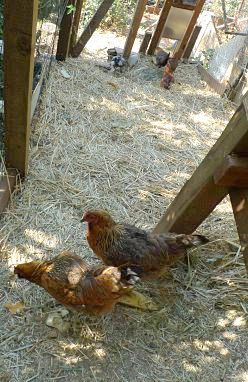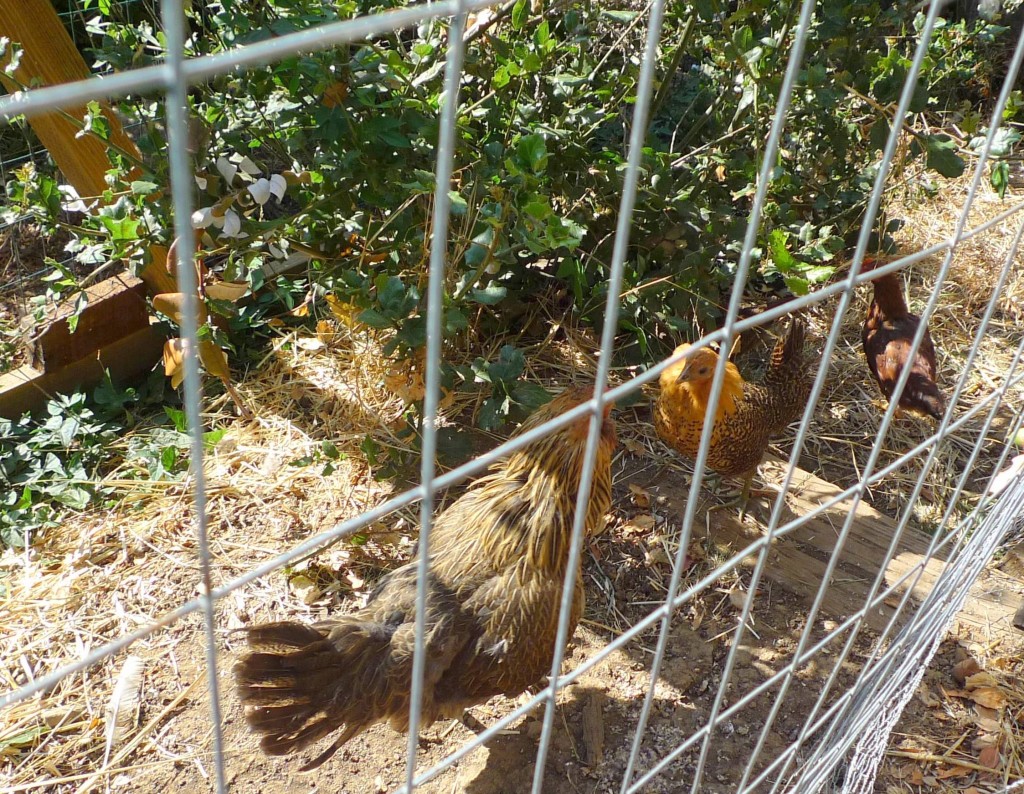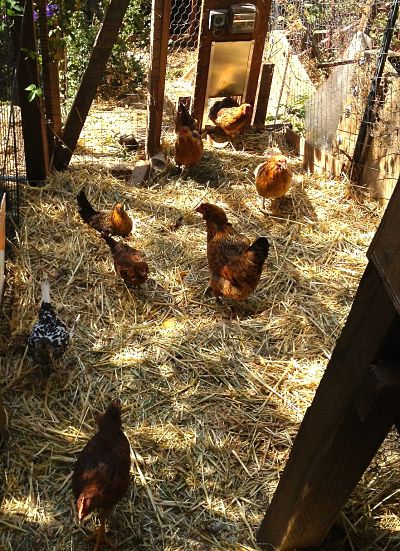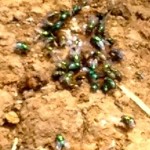 The young chickens–all four of them–have successfully integrated with the existing flock. Despite the dire predictions of my local chicken expert, the older hens did not kill or try to kill the young birds. I followed the advice of the “Chicken Whisperer,” who appeared last year at the Albany library. I bought her book City Chicks, which has advice about everything chicken, including how to clip a rooster’s toenails. She recommended that I introduce them in a cage inside the coop first, then merge them. This gave the older hens a chance to get familiar with their presence. The hens weren’t exactly thrilled to have the newbies, and asserted themselves with some vicious pecks, but there was enough room for the young ones to evade them, and they’ve been together two days now. In general, the young ones stay as far as possible from the older hens. Here they are, keeping their distance.
The young chickens–all four of them–have successfully integrated with the existing flock. Despite the dire predictions of my local chicken expert, the older hens did not kill or try to kill the young birds. I followed the advice of the “Chicken Whisperer,” who appeared last year at the Albany library. I bought her book City Chicks, which has advice about everything chicken, including how to clip a rooster’s toenails. She recommended that I introduce them in a cage inside the coop first, then merge them. This gave the older hens a chance to get familiar with their presence. The hens weren’t exactly thrilled to have the newbies, and asserted themselves with some vicious pecks, but there was enough room for the young ones to evade them, and they’ve been together two days now. In general, the young ones stay as far as possible from the older hens. Here they are, keeping their distance.
When challenged though, Selina, who acts as the mother, stands her ground. She protects her small flock, two of whom are hiding in the bushes. 
 Here they are together in relative harmony. Watching them has me thinking about all the chicken metaphors:
Here they are together in relative harmony. Watching them has me thinking about all the chicken metaphors:
- pecking order
- hen pecked
- cooped up
- flew the coop
- rule the roost
- mother hen
- mad as a wet hen
I’m sure there are many more from our long history of coexistence, and they all become vivid when you have a backyard flock.
Not to mention “like flies on shit.”
As am always keen to be pulled back into your World Of Chickens. I really am attracked to the photo of them in “relative harmony”- the fall palette of colors and the birds themselves.
It seems to me that you are getting alot of enjoyment from your farming experience. As it should be, enjoyment when and where you can eek it out. How do you spell eek anyway?
As always I am keen…
I think that you are keen to eke enjoyment out of what your eye beholds, as you really LOOK at things. EEK!
Great then, that makes two of us. Thanks for the spelling lesson.